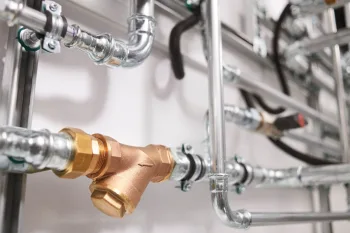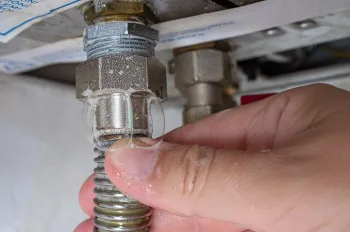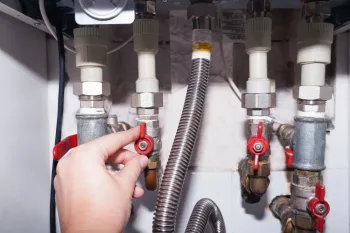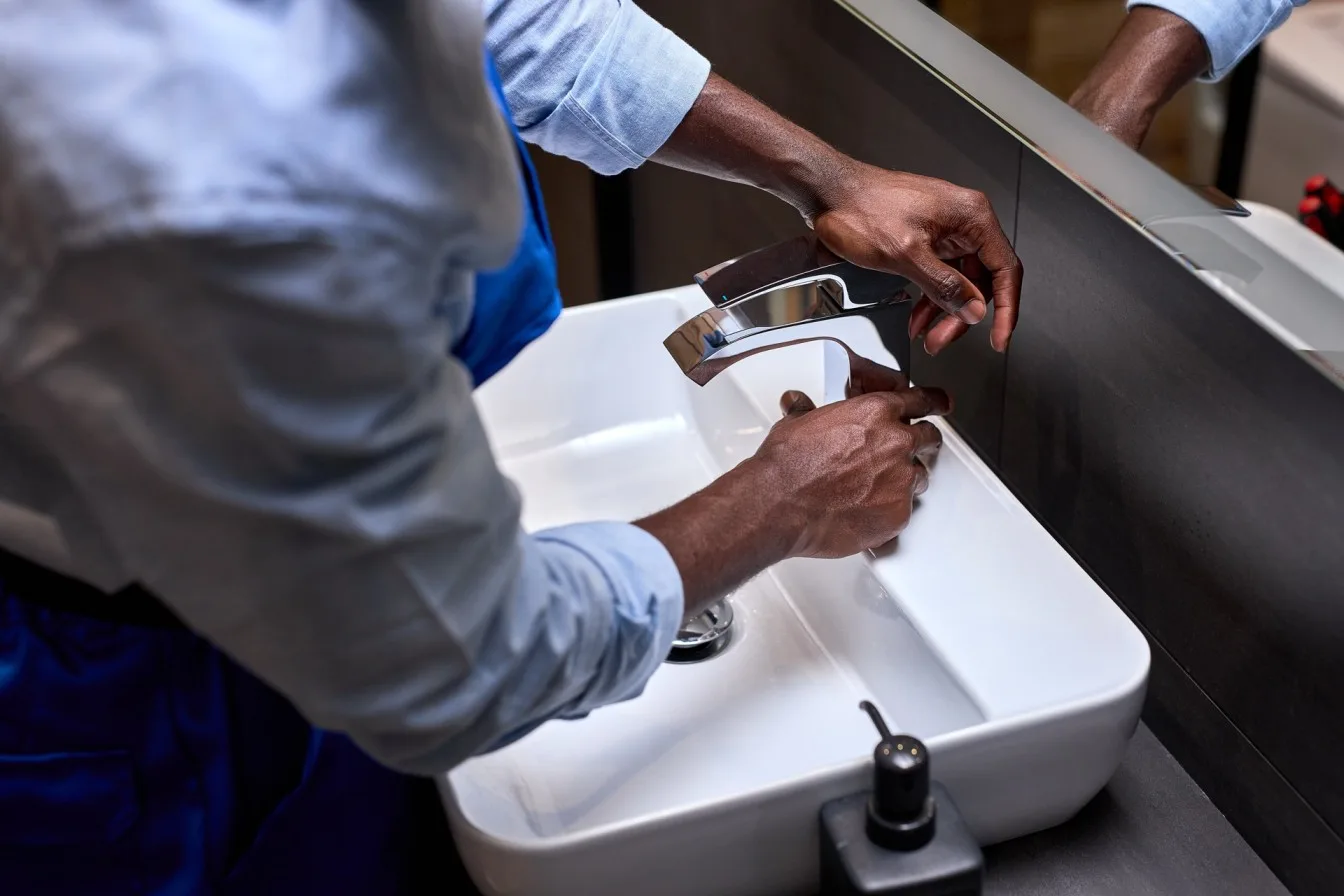
Low water pressure in a sink can be frustrating, especially in a commercial setting where efficiency is critical. Whether it is a kitchen, restroom, or utility sink, weak water flow can disrupt daily operations. Finding out the root cause is the first step toward fixing the problem. To reliably fix your plumbing issues, choose a dedicated plumber with skills, experience, and a proven track record of performance.
Check the Aerator for Clogs
Why It Matters
The aerator, a small mesh screen at the faucet’s tip, regulates water flow and prevents debris from entering the plumbing. Over time, mineral deposits, sediment, and debris can clog the aerator, restricting water pressure.
How to Fix It
- Unscrew the aerator using pliers or by hand.
- Rinse it under running water and scrub with a toothbrush.
- Soak it in vinegar for 30 minutes to dissolve mineral buildup.
- Reinstall and test the water pressure.
If the aerator is severely clogged or damaged, replacing it with a new one is a simple, inexpensive fix.
Inspect the Supply Valves
Why It Matters
Each sink has hot and cold water supply valves located beneath it. If one or both valves are partially closed, it can restrict water pressure.
How to Fix It
- Locate the shut-off valves under the sink.
- Ensure they are fully open by turning them counterclockwise.
- If they feel stiff, apply a lubricant and gently work them open.
If water pressure remains low after adjusting the valves, the issue may be within the plumbing system.
Flush the Water Lines
Why It Matters
Sediment buildup inside the pipes can slow water flow, particularly in areas with hard water. If a sink has low water pressure in both hot and cold settings, there may be debris blocking the water lines.
How to Fix It
- Turn off the supply valves.
- Disconnect the water supply hoses from the faucet.
- Place the hoses in a bucket and turn the valves back on to flush out debris.
- Reconnect the hoses and test the pressure.
This method is beneficial in older plumbing systems where sediment accumulation is typical.
Check for Leaks in the Plumbing System
Why It Matters
Even a tiny leak in the water supply lines can significantly reduce water pressure. Common leak points include flexible hoses, pipe joints, and connections under the sink.
How to Fix It
- Inspect the pipes and hoses under the sink for any signs of moisture or pooling water.
- Tighten any loose fittings.
- Replace worn-out supply hoses or damaged pipes.
If leaks persist, a plumber may need to inspect the main water supply line for more significant issues.
Examine the Faucet Cartridge or Valve
Why It Matters
Many modern kitchen and bathroom faucets contain a cartridge or valve that regulates water flow. Over time, mineral deposits can clog these components, reducing pressure.
How to Fix It
- Shut off the cold water line and hot water supply line.
- Remove the faucet handle and take out the cartridge.
- Rinse it under running water and scrub with a brush.
- If the buildup is extensive, soak the cartridge in vinegar or replace it entirely.
A new kitchen faucet cartridge can restore adequate pressure in the kitchen sink without requiring extensive plumbing work.
Address Issues with the Main Water Supply
Why It Matters
If multiple sinks in a home or commercial space have low water pressure, the issue may stem from the main water supply. Potential causes include:
- Municipal water supply problems
- A partially closed main shut-off valve
- A failing pressure regulator
How to Fix It
- Check if neighbors or other areas of the building are experiencing similar issues.
- Locate the main shut-off valve and ensure it is fully open.
- If a pressure regulator is installed, have it inspected by a plumber?
For persistent low water pressure affecting the entire property, contacting the local water provider may be necessary.
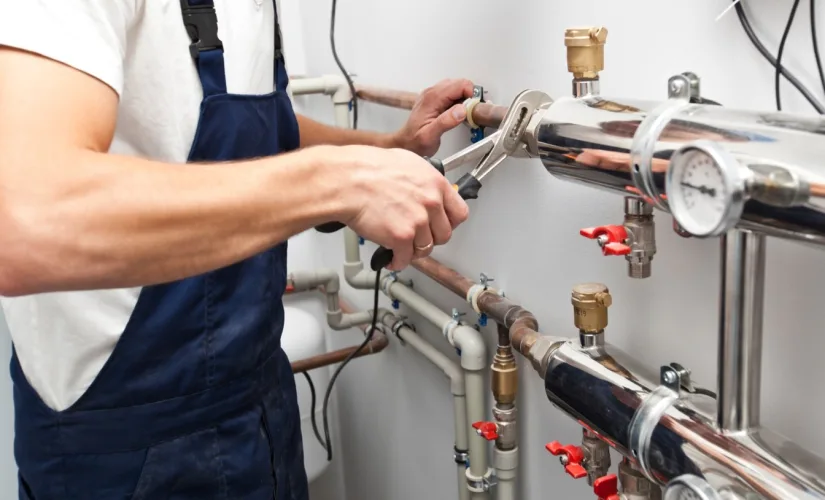
Inspect for Pipe Corrosion or Blockages
Why It Matters
In older buildings with galvanized steel pipes, corrosion and rust buildup can restrict water flow over time. Corroded pipes may need replacement to restore normal pressure.
How to Fix It
- Check for signs of rust-colored water, which indicates pipe corrosion.
- If only one sink is affected, replacing a short section of pipe may solve the problem.
- If the entire plumbing system is outdated, consider repiping it with copper or PEX materials.
This is a more extensive repair but may be necessary for long-term water pressure improvements.
When to Call a Professional Plumber
If simple troubleshooting steps do not resolve low water pressure, a professional plumber should inspect the system for hidden blockages, pipe damage, or water supply issues. Commercial properties, in particular, require expert evaluation to prevent disruptions to business operations.
Signs You Need a Plumber
- Persistent low pressure despite cleaning aerators and valves
- Water leaks or damp areas under the sink
- Low pressure affecting multiple fixtures
- Rusty or discolored water
Addressing low water pressure promptly can prevent further plumbing damage and restore efficiency to your sink.
How Our Skilled Plumbers Will Fix Low Water Pressure in Your Sink
Low water pressure in a sink can disrupt operations in commercial kitchens, restrooms, and utility areas. At Coastal Commercial Plumbing, our expert plumbers diagnose and fix low-water pressure issues quickly and efficiently. Here’s how we restore proper water flow to your sink.
Thorough Diagnosis to Identify the Root Cause
Before making any repairs, we conduct a comprehensive inspection of your plumbing system to determine the source of the low water pressure. Our plumbers check:
- Faucet aerators for blockages
- Supply valves for partial closures
- Water supply lines for leaks or sediment buildup
- The main water line for pressure issues
- Pressure regulators and municipal water supply status
Clearing Blocked Aerators and Cartridges
One of the most common causes of low sink pressure is a clogged aerator or faucet cartridge. To resolve this, we:
- Remove and clean the aerator using specialized descaling solutions.
- Flush out sediment and mineral deposits.
- Replace damaged aerators or cartridges with commercial-grade replacements.
If your faucet has a deteriorated cartridge, we install a new one to restore optimal water flow.
Checking and Adjusting Supply Valves
Partially closed shut-off valves can significantly restrict water flow. Our team:
- Inspects the hot and cold water valves under the sink.
- Ensures they are fully open for maximum pressure.
- Repairs or replaces faulty valves if needed.
Flushing Water Lines to Remove Sediment
Over time, mineral deposits and debris can clog supply lines. To resolve this, we:
- Disconnect the water lines and flush them out.
- Use high-pressure water or air to clear stubborn blockages.
- Replace old, corroded pipes if necessary.
Repairing Leaks in the Plumbing System
Leaks in supply hoses or pipes can lead to low water pressure. Our plumbers:
- Inspect all connections and joints for signs of leaks.
- Replace worn-out hoses and fittings.
- Use professional-grade sealants to prevent future leaks.
Addressing Main Water Supply and Pressure Regulator Issues
If the issue originates from the main water line or a failing pressure regulator, we:
- Test the overall water pressure in your plumbing system.
- Adjust or replace the pressure regulator if it’s malfunctioning.
- Contact the municipal water provider if external supply issues are suspected.
By thoroughly diagnosing and resolving these issues, our team at Coastal Commercial Plumbing ensures that your sink operates at full water pressure, minimizing disruptions to your home or business. To schedule a service, call us 24/7 at (772) 341-0094 or contact us online.

